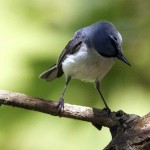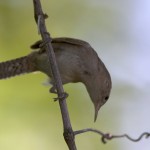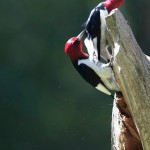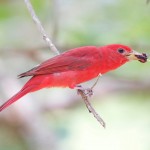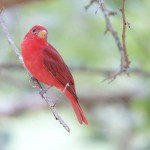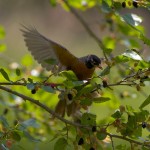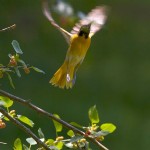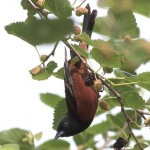Riveroflife
Posts by :




Redheaded Woodpeckers nearing fledging brood one
Click on image to enlarge
This pair of birds has been mating and nesting since 4/14; starting building nest in tree cavity on 4/22; began feeding chicks on 5/18; and now are making continuous trips to feed. My guess it that the fledglings will emerge tis week sometime; stay tuned. I try to visit the nesting site ever other day.
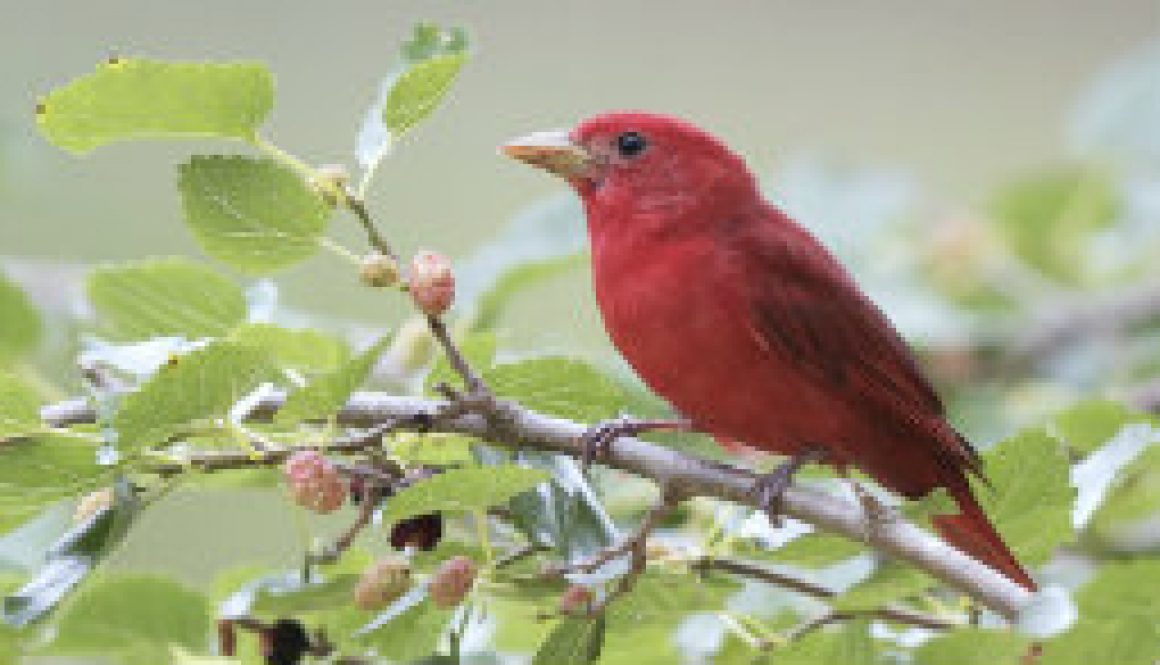

Unusual birds in action
Click on image to enlarge
These pictures were taken over the weekend at a Mulberry tree. Many species of birds were gorging themselves with ripened berries. Pictures female Baltimore Oriole, juvenile male Baltimore Oriole, Orchard Oriole male and female and a Robin. Taken with Canon 7D with 400mm f 5.6.


Beautiful mated pair of Redheaded woodpeckers
Click on image to enlarge
This particular woodpecker is declining across Missouri and the US and Canada. I caught a mated pair last evening on a dead tree snag starting their nest. There a few Canon 7D pics from about 75′. These birds are frequently seen at River of Life Farm and have at least 2 nesting sites there.
Red-headed Woodpecker
(Melanerpes erythrocephalus)
Easily identified by its red head and white wing patches, this woodpecker is also the most adept at catching flying insects. It is one of only four woodpecker species known to cache food in the winter months and is the only known to cover food with bark and other wood. Historically a species with population fluctuations, it has experienced a 4.6% decline per year since 1980 due to habitat destruction and a milieu of other factors.
Identification
Adult males and females are indistinguishable in the field and are easily identified by their red heads, necks, throats, and upper breasts. Their remaining underparts are white and their upperparts are mostly black with a blue or green iridescence. A large white patch on the wings is used to identify both adults and juveniles. Juvenile plumage most differs from adults on the head, neck, and upper breast with varying degrees of brown or red and white wing patch. Bill is white or gray. Calls are described as churr, tchur, and churr. Alarm call at nest is described as KRIT-tar-rah or QUARR-QUARR-QUARR. Drumming is done in bursts of 1-second duration and repeated 2 or 3 times.
Distribution and Population Trends
Breeding range covers most of the eastern half of the United States west of the Rocky Mountains north to southern Saskatchewan, Manitoba, Ontario, and Quebec. Birds withdraw from northern third of range in winter with distribution dependent upon food abundance. Red-headed Woodpeckers are found in Nation’s Road Grasslands and Letchworth State Park IBA in New York with over 8 breeding pairs, Bonny Lake State Park & South Republican Management Area IBA in Colorado, Cabot Head IBA in Ontario with more than 40 individuals during fall migration, and Kinosota-Leifur IBA in Manitoba where over 100 breeding Red-headeds occur (3% of Canadian population).
Populations have always seemed to fluctuate from abundant to on the verge of extinction. Periods of abundance have coincided with the decline of chestnuts and elms, perhaps because of increased nesting trees. Periods of decline coincided with the decline of beech trees and Rocky Mountain grasshoppers in central US. Range has contracted to the southern limits of Ontario and appears to be decreasing in abundance across entire range. The Breeding Bird Survey indicates a significant population decline of 2.5% per year from 1966-2000 and by 4.6% per year over the last 20 years (1980-2000). This has amounted to a 50% population reduction since 1966. The Christmas Bird Count indicates a similar population decline, with both a decrease in the number of individuals recorded and the number of individuals observed per party hour. Local population increases have been associated with increasing beaver populations and the creation of flooded forests with lots of snags for nesting.
Ecology
Occupies a wide range of habitats, but most are characterized by open areas for feeding, snags for roosting, and a secure food supply. Requires multiple snags for nesting, roosting, and foraging. Some of the habitats used are: open deciduous and riparian woodlands, orchards, parks, agricultural lands, savanna-like grasslands, beaver ponds with snags, forest edges, burned forests, and flooded bottomland forests. Habitats are similar in both breeding and wintering range, but winter distribution most determined by presence of food. Have been known to move north in winter if mast is heavy.
Begin nest-building as early as February and egg-laying as early as mid-April. An average of 4-7 eggs are laid in the cavity and incubated by both parents for 12-14 days. May have two broods per season and will lay a second clutch if first fails. A pair may use the same cavity for several years in a row. Red-headeds may use cavities excavated by other woodpeckers or even force some species to abandon active cavities.
Consumes seeds, nuts, sap, corn, fruit, insects, bird eggs, nestlings, adult birds, and mice. Eats mostly insects and plant material in summer and mostly nuts (acorns and beechnuts) in winter. Will forage on ground, capture insects in flight, glean food from vegetation, or chisel trees for wood-boring insects and sap. Most adapted of all the woodpeckers for flycatching. Will store food for winter (grasshoppers, nuts, corn, and fruit) in natural crevices of trees and posts, in tree cavities, under bark, and under railroad ties and shingles. Only known woodpecker to cover stored food with bark or wood.
Threats
At one time the Red-headed Woodpecker was targeted by sportsmen because of its brilliant red plumage, as an agricultural pest, and for damage to telephone poles. Its population has decreased as a result of food source losses, as evidenced by population declines in association with the decline of beech trees and the disappearance of Rocky Mountain grasshoppers. Collisions with automobiles were particularly common in the mid-1900s and the species is considered a rare victim of tower collisions. Nest failure occurs when nests are excavated in telephone poles recently (within 3-4 years) treated with creosote. Competition for nesting sites with European Starlings was thought to decrease reproductive success, but recent studies show that this may not be the case. The mere fact that starlings nest earlier than this woodpecker suggests that Red-heads may not be vulnerable to starling invasion. Habitat has been degraded by the harvesting of snags, clearcuts, agricultural development, channeling of rivers, regeneration of eastern forests, fire suppression, monoculture crops, and the loss of small orchards.
Conservation
The Red-headed Woodpecker is listed as a vulnerable species in Canada and is listed on multiple state threatened species lists in the United States. Habitat should be managed so as to provide large forest fragments (>2 ha) with large snags for nesting and open areas for catching flying insects. In addition, selective thinning has been shown to increase the likelihood of occurrence and nesting in Ohio. Controlled fires have negative and positive impacts. While they open up the forest (providing open space for fly catching) and create snags, they can also destroy existing snags used for nesting.
The Red-headed Woodpecker is listed as a priority species in Partners in Flight’s Bird Conservation Plan for the Upper Great Lakes Plain (https://www.partnersinflight.org). One of the objectives of this plan is to increase Red-headed Woodpeckers by 3% per year in USFWS Region 3 from 1980-2010 as measured by the Breeding Bird Survey.


